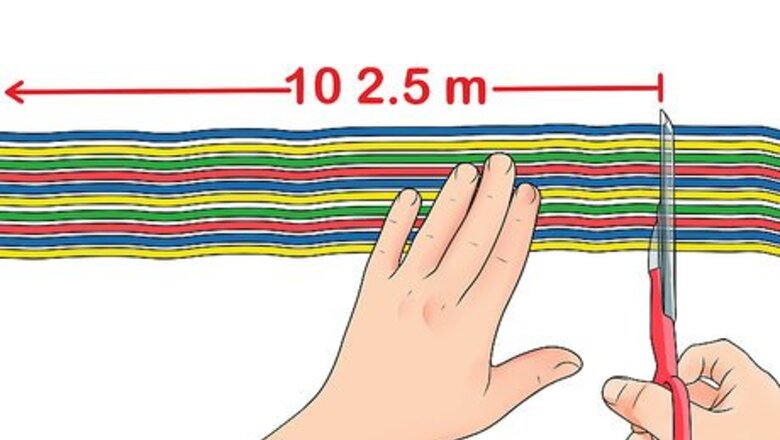
views
Cutting and Tying Paracord
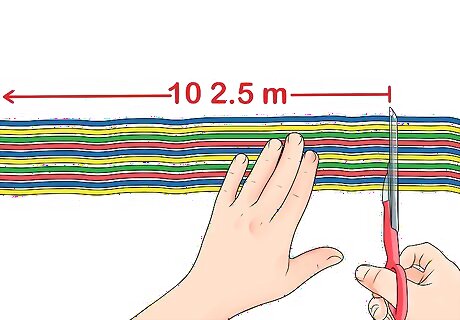
Cut out 10 lengths of paracord. Using bulk paracord, cut out 10 2.5 m (8.2 ft) long lengths of ⁄4 in (0.64 cm) paracord. It's best to use alternating colors of paracord to more easily differentiate the lengths later on. You can find paracord at most hobby stores, at hardware sports stores, or online. Paracord is recommended for its stretchiness, but you can use any type of nylon cord instead. It's important not to use an organic material, such as hemp or rope, as the horse may chew through it and loosen the hay.

Fold the paracord in half and align the ends together. Hold all of the paracord lengths together and fold them over your hand, so that both sides are equal. An easy way to do this is to align the ends on both sides, as this ensures that there is an equal amount of cord on either side of the fold. Aligning the ends together is essential to making your later knots as equally spaced and properly separated as possible. It can be troublesome if you realize one cord is shorter than the others while knotting, as you will have to untie and re-align the bunch all over again.
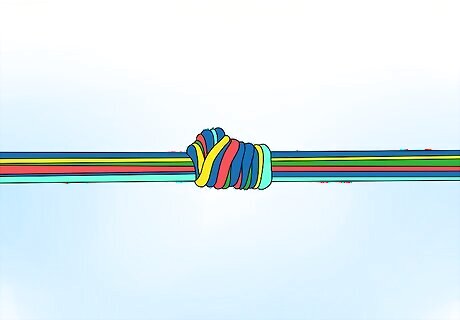
Form a knot with the whole bunch where you folded it in half. Take the ends of the cords and tie a knot with the entire bunch at once. This tells you where the top of the haynet will be and the knot can be hung from a hook or a fence to make the tying process easier later on. To tie a knot with the whole bunch, wrap the middle of the folded cord around your hand, creating a loop, then remove your hand and push the one end of cords through the hole created by your arm. Pull the ends through and you should end up with a tight knot directly in the middle of the bunch.
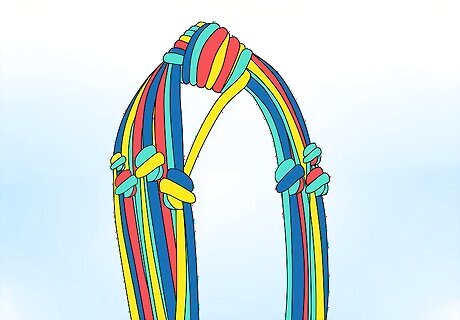
Tie 10 knots a little bit below the top knot with two pieces of cord each. Use two pieces of paracord at a time to create 10 separate knots about 5 cm (2.0 in) below the top knot. You should end up with a ring of knots all equally spaced from the top knot. If you used alternating colors of paracord, simply combine adjacent cords of different colors to end up with a ring of knots.
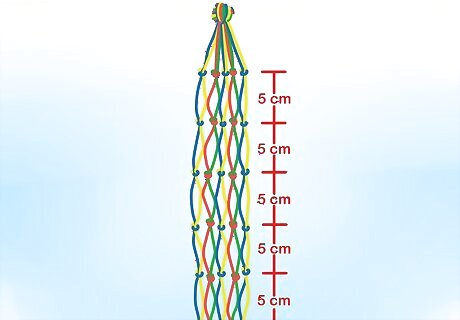
Continue making knots every 5 cm (2.0 in) while alternating threads. Go down the entire length of the paracords and create knots all the way down every 5 cm (2.0 in). Instead of using the same two pieces of paracord every time, use the one next to it on the other side to create triangle-shaped holes. After tying cord all the way down, you should end up with what look like diamond-shaped holes. If you tie the same two lengths of cord together all the way down, you will not end up with a net, and instead will have an array of unconnected cords with knots in it. You should end up with about 12 or 13 rows of knots with a little bit of rope dangling below the last knot, usually more than 5 cm (2.0 in)
Finishing the Ends
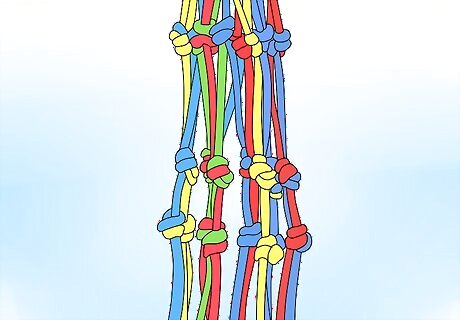
Make a final knot directly below the last row of knots. Use the same two cords that you used for the previous knot, and tie a final knot ⁄4 in (1.9 cm) below the last knot on each cord. This will create a ring of 10 small loops at the end of the haynet. Don't cut away any rope until you have finished the last knots for every loop.
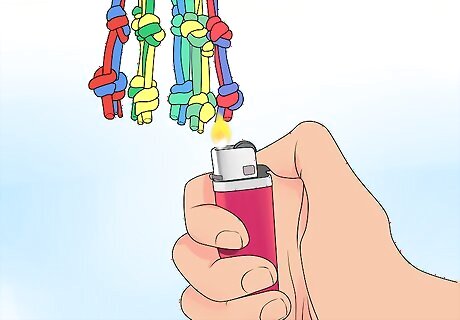
Cut off the remaining cord and burn the knots to prevent fraying. Cut away any remaining paracord from where it attaches to the last ring of knots and set it to the side. Then, using a lighter or torch on its lowest setting, burn the knots where you cut away the remaining rope to solidify the knot and prevent fraying. Stop burning the knots when you see the plastic of the cord melting or when it starts to char or catch light. Keep some water nearby to quickly put out a fire if the knots catch alight.
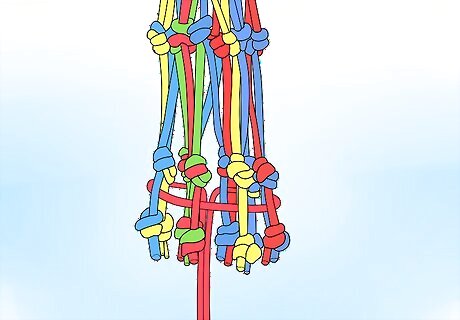
Thread a cord through the loops at the end of the haynet. Take a .9–1.2 m (3.0–3.9 ft) long piece of paracord and thread it through each loop all the way around the haynet, but don't tie it. Instead, leave the rope to hang down and align the ends, so you have an equal amount of rope coming out of the first and last loops.. The loops at the bottom are created by the small gap between the last two knots on the same ropes.
Filling the Haynet and Feeding Your Horse
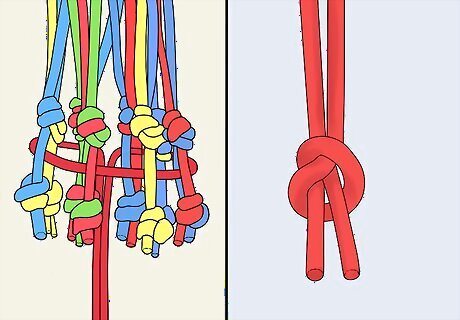
Tie the end of the cord into a knot, so it can be hung. Tie the very end of the dangling cord into a knot to leave about ⁄3 metre (1.1 ft) of space between the knot and the haynet. This will allow the haynet to expand with its contents while also allowing it to be tied around a fence pole or hung from a height.
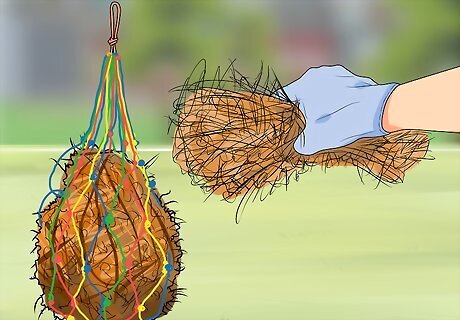
Flip the haynet upside down and load hay into the open hole. Turn the haynet so that the open hole is facing upwards. Then, open the hole and load as much hay as can fit into the haynet. It should stretch as you continue to add hay, allowing for multiple pounds of food to be kept at once. Haynets are popular because they keep other animals from getting into the horse's food. Rats, mites, and other creatures will easily get into a trough, whereas a haynet can be hung from something and dangle in the air.
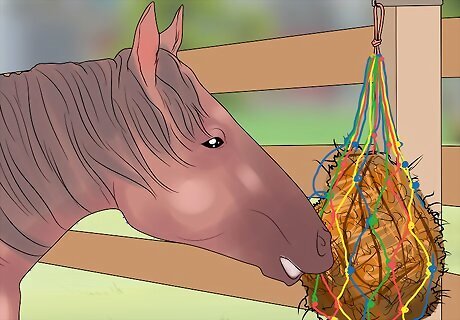
Hang the haynet from a fence or pole and let your horse munch away. Hang the filled haynet from a high fence or pole to keep it off the ground and let your horse investigate it and eat from it. You can hang it from the stable wall if there is something to tie it to in the roof, which allows your horse to have some food while it is in its stall. You may find that the rope to hang the haynet from is too long, in which case, simply wrap the rope around the pole or fence a few times to raise the haynet and provide a stronger hold.














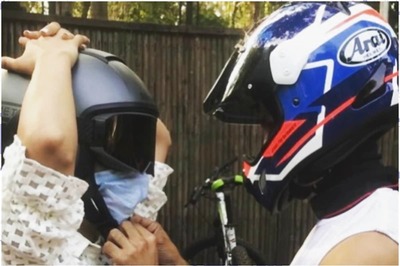





Comments
0 comment